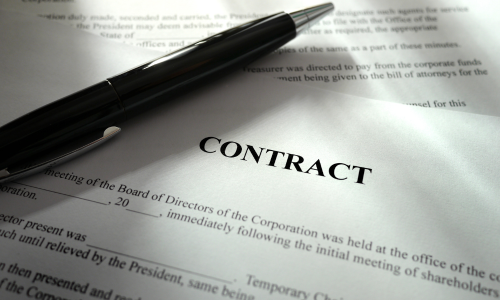Learning the basics of contract drafting is a cornerstone for every law student. Whether in private practice, in-house counsel, or commercial roles, lawyers spend substantial time drafting, negotiating, and reviewing contracts. A solid understanding helps minimize disputes, clarifies parties’ expectations, and ensures enforceability.
What is Contract Drafting?
Contract drafting is the process of transforming the intent and understanding between parties into a legally binding written document. A well-drafted contract reflects the meeting of minds—offer, acceptance, and consideration—ensuring that all parties clearly understand their rights and obligations. Contracts govern a wide spectrum of agreements, including employment contracts, service agreements, leases, vendor contracts, and commercial arrangements.
Key Elements of a Well-Drafted Contract
- Parties
Clearly define who is entering into the contract. Include legal names, addresses, capacity, and, where applicable, business registration details. This ensures only authorized parties are bound. - Definitions and Interpretation
Important or technical terms should be defined at the outset. This prevents ambiguity and ensures consistency throughout the document. - Purpose and Scope
State the objectives, deliverables, and limitations. Vague provisions are a common cause of disputes; precise drafting is essential. - Obligations and Rights
Detail what each party must do (or refrain from doing). Use specific language, allocate risks appropriately, and avoid vague or open-ended terms. - Payment Terms
Clarify amounts, timelines, permitted modes of payment, and consequences of late payments. Financial clarity helps avoid misunderstandings. - Intellectual Property and Confidentiality
Clearly provide for ownership and permissible use of intellectual property, and safeguard sensitive information. These clauses are crucial in technology, services, and creative sectors. - Term, Termination, and Exit Clauses
Define the contract’s duration, renewal terms, and conditions under which it may be terminated—whether by agreement, breach, or external factors like force majeure. - Dispute Resolution and Governing Law
Specify the preferred method (arbitration, mediation, litigation) and the applicable law and jurisdiction. This ensures certainty in resolving future disagreements. - Signature Blocks
The contract becomes binding once authorized representatives sign. E-signatures are widely accepted today in many jurisdictions.
Steps and Best Practices in Contract Drafting
- Preparation
Understand the subject matter, business outcomes, and relevant laws. Review emails or pre-contract negotiations to ensure consistency with the draft. - Structuring
Use a logical flow: introduction, recitals, definitions, scope, operative clauses, payments, obligations, confidentiality, dispute resolution, and execution. Headings, numbering, and formatting increase readability. - Language
Prefer plain, clear English over archaic or excessively legalistic terms. Define abbreviations and technical terms. Active voice enhances clarity. - Proofreading
Review drafts multiple times to catch errors, omissions, or inconsistencies. Always interpret the contract from a party’s perspective—does the text align with the commercial intent? - Negotiation
Drafting is rarely a one-time process. Important clauses—payment, liability, termination—are usually negotiated. Learn to redline and comment effectively. - Customization
Avoid relying solely on templates. Adapt clause wording to the specific transaction and industry. For example, insert data protection clauses in technology contracts.[1]
Conclusion
Mastering the basics of contract drafting lays the foundation for a successful legal career. It requires precision, clarity, commercial awareness, and negotiation skills. The best way to improve is through practice, feedback from seniors, and studying real-world contracts. Over time, students can transform drafting from a technical chore into an essential professional strength.
[1] https://www.law.georgetown.edu/wp-content/uploads/2018/07/Tips-for-Achieving-Clarity-in-Contract-Drafting.pdf


